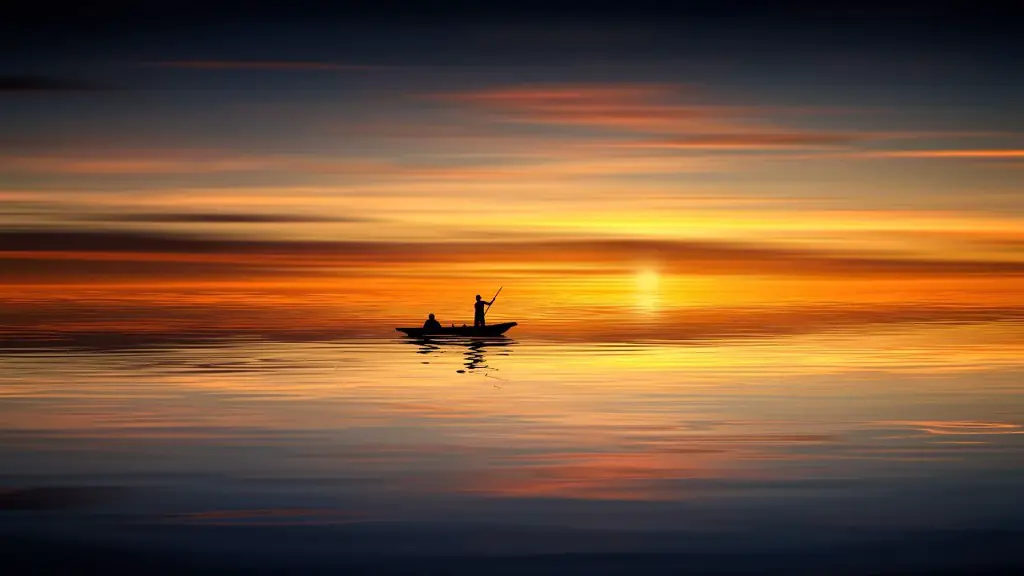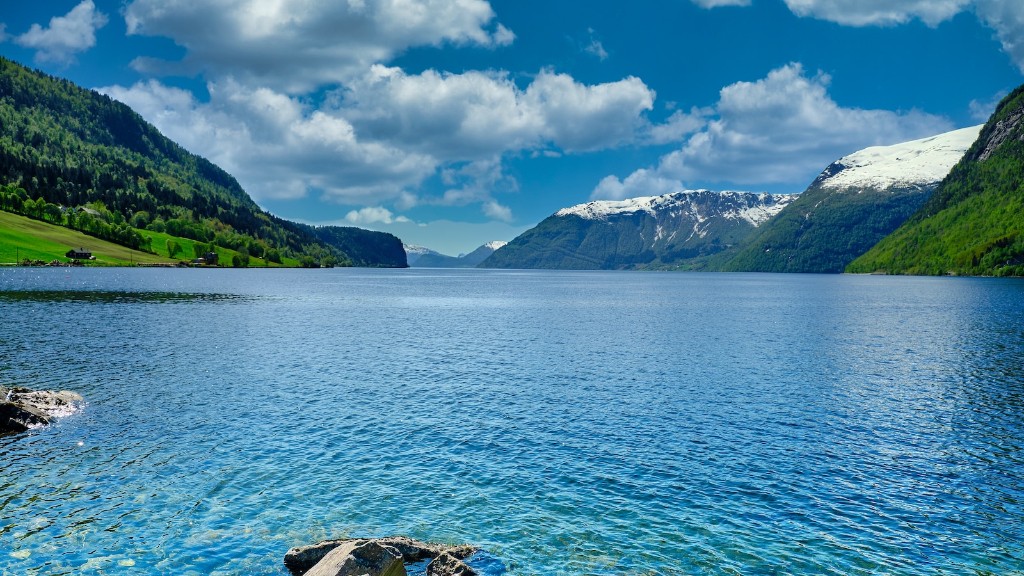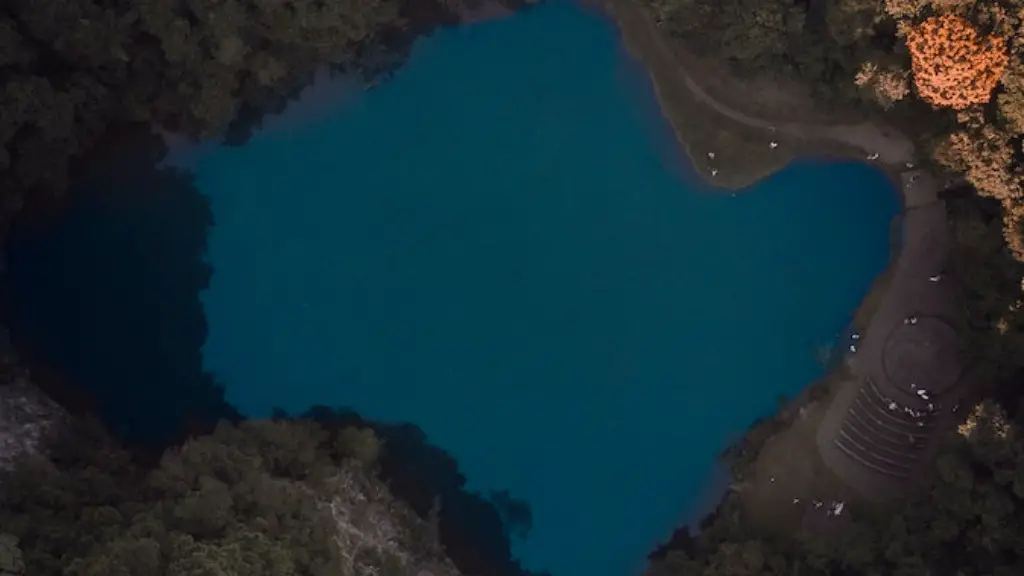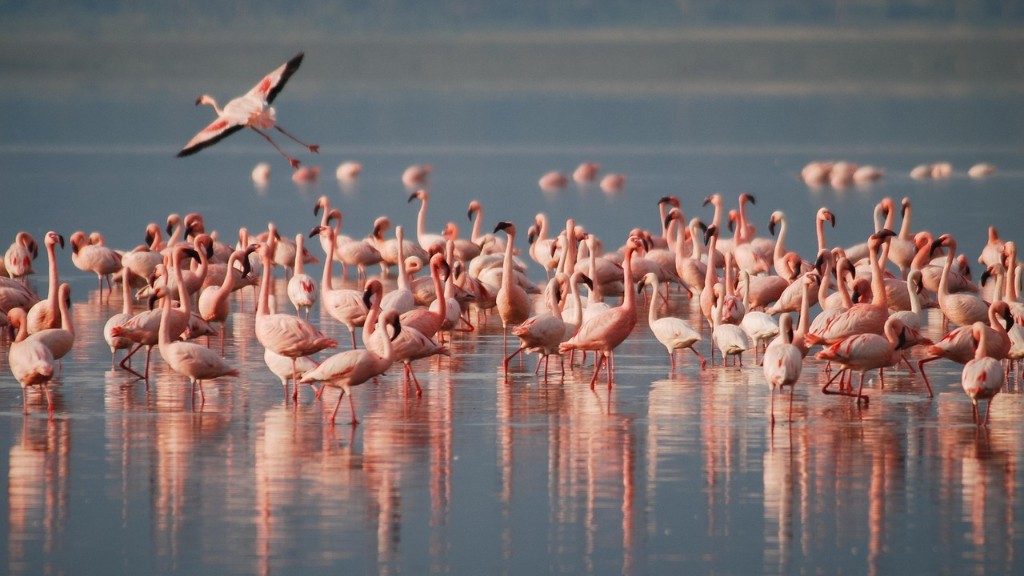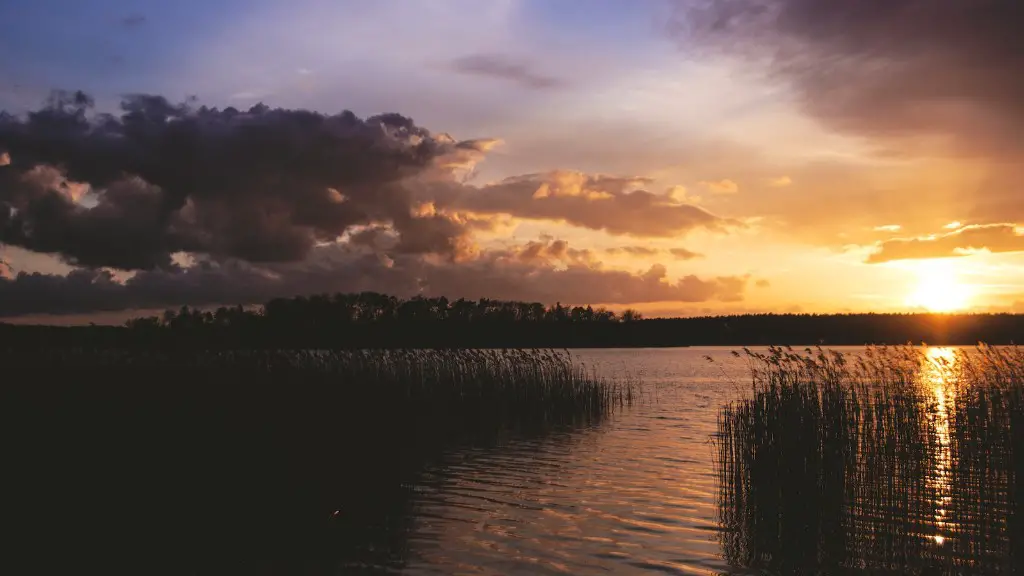Lake Superior’s Depth & Size
Lake Superior is the largest of the Great Lakes of North America, as well as the deepest and longest among them. The lake stretches 310 miles in length, 160 miles in width, and with its deepest point at 1,335 feet, it goes down roughly as deep as the Empire State Building is tall. The lake’s surface sits at 600 feet above sea level, making it the largest body of freshwater that sits higher than the oceans.
The lake is fed primarily by two small rivers, the Montreal and the St. Louis, and then further lakewards by the many mouths of the river flowing in from the northernmost reaches of Ontario and Minnesota. The lake has an estimeted capacity of up to 2,935 cubic miles of water and shares more rivers, stream and creeks within its drainage basin than any other body of fresh water.
Damming of certain rivers has changed the lake’s natural tendency to flush itself out. In the modern day, Lake Superior requires 1,500 years to cycle through and recycle its own water, compared to its original estimated 600 years before men started interfering. Despite the human disturbance, Lake Superior’s waters have managed to remain relatively clean and clear, due to its remote location and its ability to dilute pollutants.
Climate & Wildlife
The four seasons of Lake Superior are experienced with profound intensity; the summers average in mild temperature, the spring and fall are slightly cooler and the winters are bitterly cold. The insulating effect of the lake is profoundly felt in its immediate region, where temperatures are moderated ahead of the rest of the Canadian Continental climate.
Given the lake’s size and its moderate climate, it is an incredibly rich ecological habitat. Some of the lake’s more interesting species are the lake trout, burbot, smelt and whitefish, as well as a host of others. There are also unique sightings of land-dwelling species, such as the moose and black bear, daring to take a dip in the lake’s cooler depths. The lake’s waters also host a population of minnows, many of which have adapted to live in the lake and thrive in this environment.
Controversy Over Management & Development
With such a vast body of water, there is, of course, debate to be had around the best management and usage of the lake. There’s a long history of human activities that threaten the long-term health of the lake, argued especially over the question of who has the right to own the lake’s limited resources. Native American tribes have for generations laid claim to the waters, but a combination of expansions in international fishing techniques, legal debauchery, and general mismanagement have robbed them of these claims.
The more recent struggle centers around a plethora of environmental issues, such as the introduction of invasive species and pollution from the air. With pollution increasingly becoming a major issue globally, Lake Superior is no exception and the debate rages on between industries wanting to profiteer from the lake’s aquatic hub and a growing desire to protect the lake’s native species and biodiversity.
Lake Superior & Tourism
In addition to the heated debates over management of the lake, locals and visitors alike appreciate and benefit from the lake’s proximity and its breathtaking views. Hundreds of scenic roads, parks, beach access points, and trails line the lake’s shores, each offering its own unique experience. There are well-known national parks such as Pictured Rocks, the forests around Grand Portage, and the old-growth forests of the Apostle Islands, each of which gives visitors access to Lake Superior’s wild and varied attractions.
People also come from around the world to witness the beautiful waterfalls, deep gorges and hidden caves scattered along the lake’s vast shoreline. Tourysts often marvel at the deep blues of the lake, as well as its powerful thunderous waves that make their way along the lake’s breathtaking vistas.
Marine Traffic & Sports
In addition to tourists, the lake also serves as a hub for marine transportation, hosting both the commercial and recreational vessel traffic. The Soo Locks, found in the southern tip of the lake, are the busiest working locks in the world, allowing vessels to move between Lake Superior and Lake Huron. Additionally, the lake is a popular spot for sailing, fishing and kayaking amongst its beaches and wild shores.
The largest city right on the shore of Lake Superior is Duluth, Minnesota, which is home to bustling state parks, scenic trails and several shipping and industrial developments. But despite the of commercial developments the lake’s beauty still stands, able to captivate those fortunate enough to experience it.
Archaeo-Conditioning of the Lake
The first known residents of Lake Superior are generally believed to have been indigenous peoples seeking to develop the land for its plentiful resources. Early historical accounts suggest that as far back as 7,000 years ago, human beings were already taking part in subsistence fishing and hunting in the area, although some archeologists suggest it could even have been longer.
The environmental effect of these past occupations is still seen today, with some of the most enduring examples being their impact on fish populations – particularly their introduction of sturgeon and other species. These early settlers also left behind evidence of eating habits that suggest they had mastered the art of preserving their catch with the use of smokehouses, drying racks and salting beds.
Historic Weather Records & Legends
Over the years, the lake has been responsible some of the Great Lake’s worst storms, with one of the most notable storms occuring in 1905 when winds of up to 125 miles per hour battered the lake and killed 250 unsuspecting sailors. In 1975, another storm, during which winds of up to 140 miles per hour hit the lake, left no survivors and ultimately destroyed 13 ships, earning it the nickname The Gale Of 1975.
Indigenous legends also feature Lake Superior, with tales of mythical creatures, curses, healing waters and even of a golden city at the bottom of the lake. Despite a lack of solid evidence, these mythologies have added to the mystique surrounding the lake and, even to this day, continue to fascinate and entertain.
Water Quality & Preservation
Despite decades of long-term degradation, the lake has been relatively resilient, with its shores and waters continuing to be relatively clear and unpolluted, for the most part. This is because the lake is able to constantly cycle its waters, and its clean and fresh water is a result of its slow cycle time. Despite the varying pollution inputs from various sources, the lake is able to self-regulate and maintain its signature clarity, provided people don’t interfere.
The lake is also home to some of the most important environmental organizations, that are passionately dedicated to the preservation, protection and restoration of the lake. These groups help to raise awareness about the lake and the qualities it offers, educate people about the importance of clean water, and even engage in ambitious projects such as restoring historic sites to their former glory.
Conclusion
In conclusion, Lake Superior is an enormous body of freshwater that sits far above the oceans and is home to a rich array of wildlife and plants. There is much debate over who gets to own the lake and how it should be managed, as well as its potential uses. But despite the human disturbance and development, it remains a wild, pristine and clear lake with a vast array of attractions. It is both an important natural resource and an incredible location to enjoy, and its various depths and nearby attractions have a lot to offer to tourists and locals alike.
